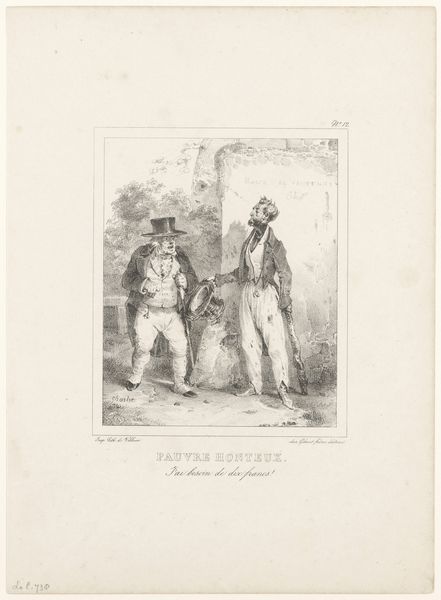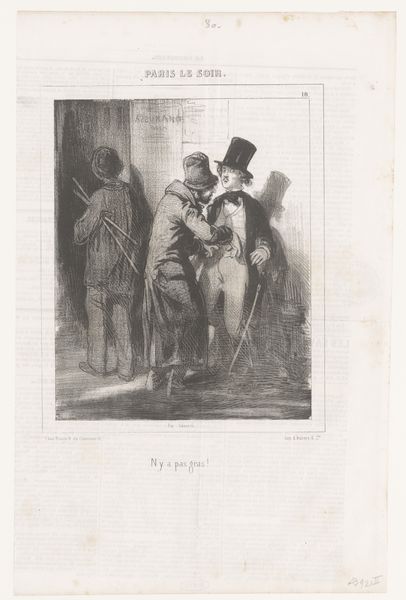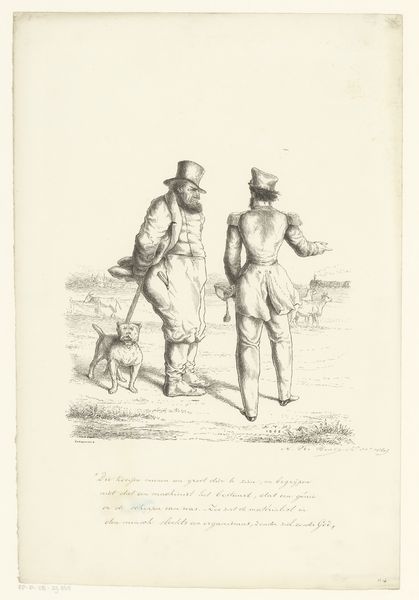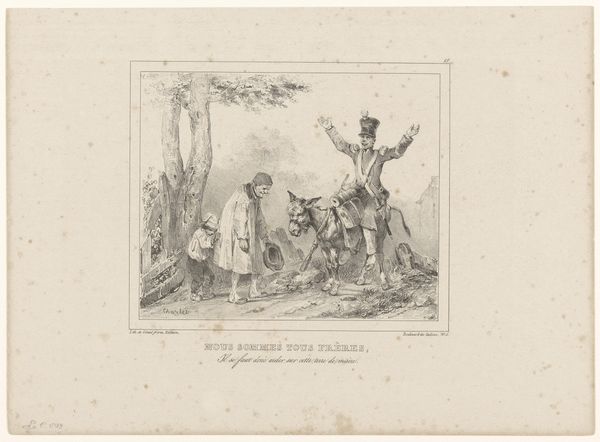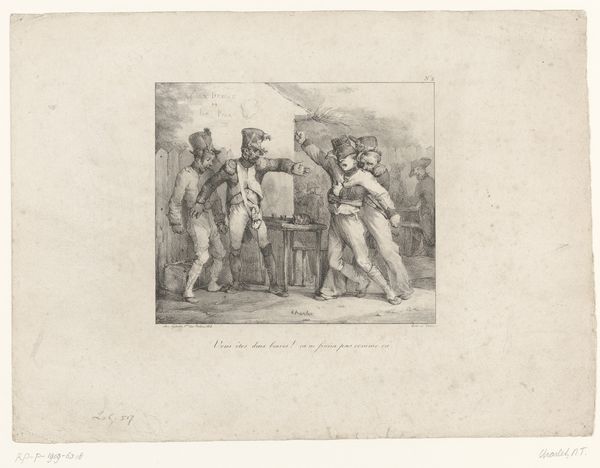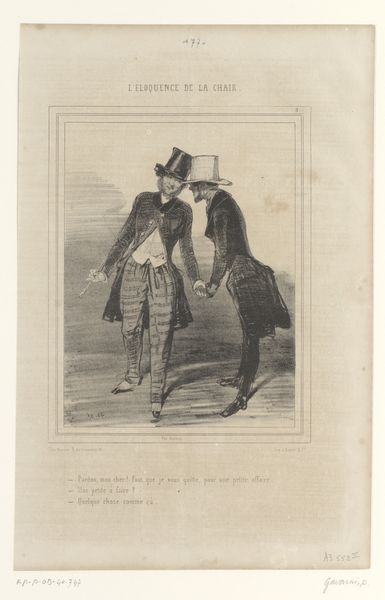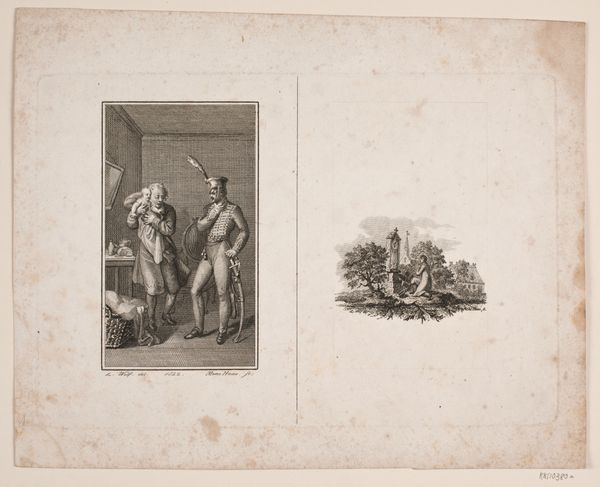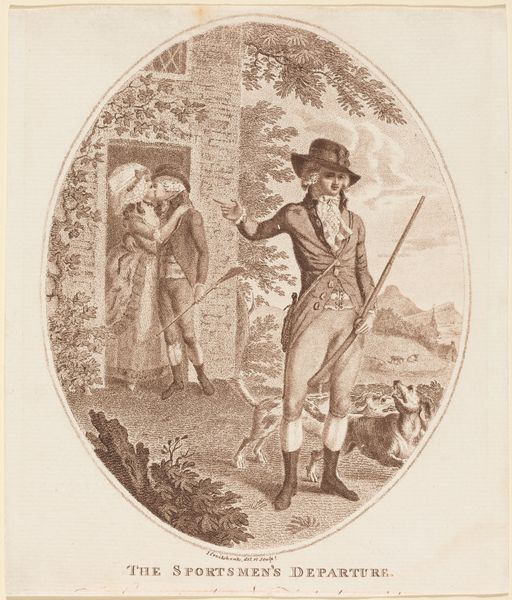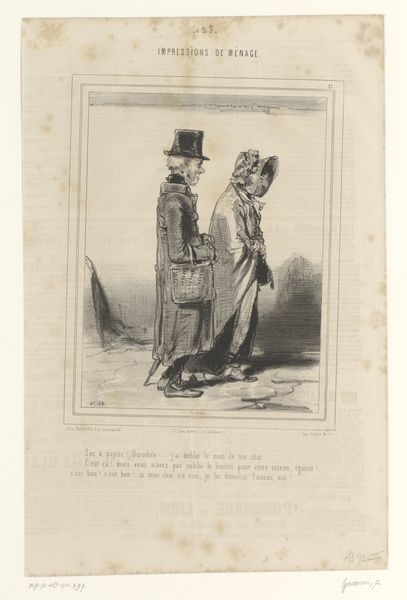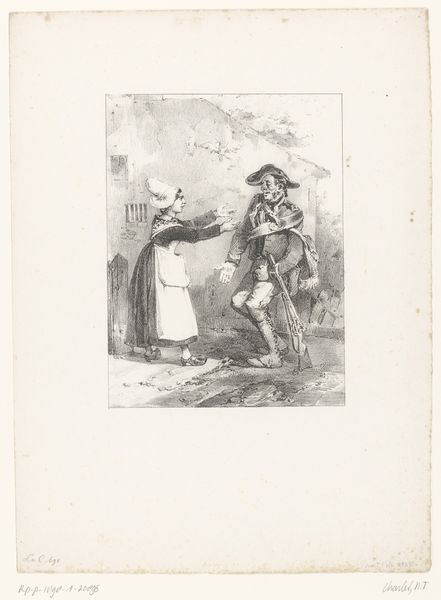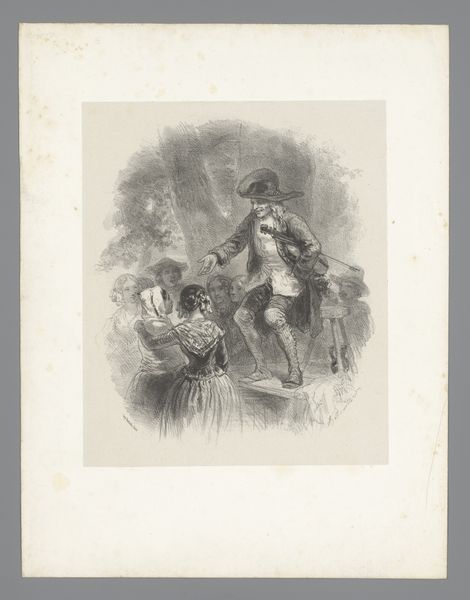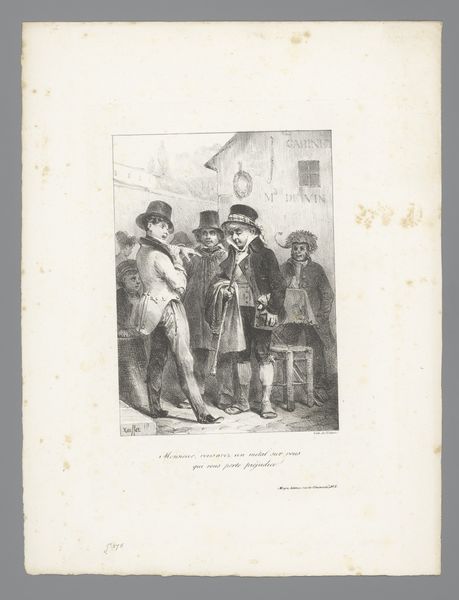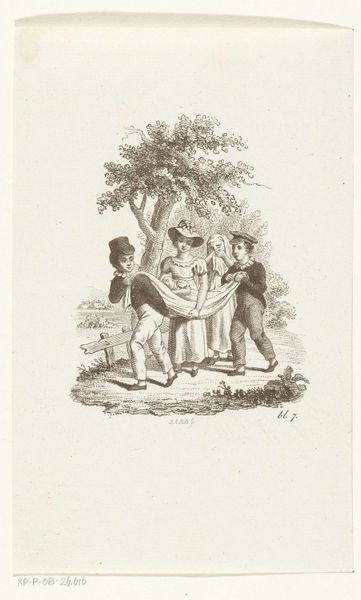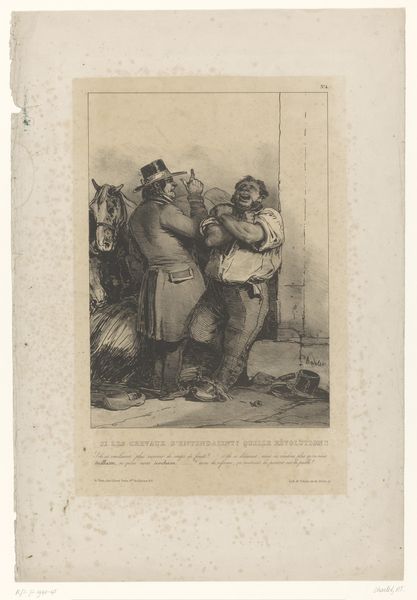
drawing, lithograph, print, etching, engraving
#
portrait
#
drawing
#
lithograph
# print
#
etching
#
romanticism
#
genre-painting
#
engraving
Dimensions: height 420 mm, width 290 mm
Copyright: Rijks Museum: Open Domain
Editor: This is "Uniformprent," dating from 1800-1839, attributed to Gottfried Engelmann. It's a print, a combination of lithography, etching, and engraving, now held at the Rijksmuseum. What strikes me is the crisp detail, the rendering of these military figures… How should we interpret this piece? Curator: Let's consider this "Uniformprent" through the lens of its production. Engelmann's use of lithography alongside traditional etching and engraving points to a changing artistic landscape, doesn’t it? The image serves not just as a representation of military figures but as an artifact embedded in the means of its own creation. How does the choice of these specific printmaking methods, each demanding different labor and resources, affect our understanding of the image and its subjects? Editor: I see what you mean! So, it’s not just what is depicted, but how it’s depicted. Curator: Exactly! The multiple processes reflect a changing approach to artmaking. Lithography, with its potential for mass production, suggests a democratization of image-making, while the hand-worked aspects of etching and engraving retain a connection to traditional craft. Think about the consumption of these images too. Were they aimed at the elite, documenting their armies, or a wider public, fueling patriotic sentiment? How accessible were these prints, and what kind of social role did they play? Editor: That shifts my perspective completely. It makes me wonder about the printers themselves—who were they, and what were their lives like? Curator: Precisely! Considering the labor and social context deepens our appreciation. Instead of only reading the image as a representation of soldiers, we understand it as a product of complex social forces. What new questions does it raise for you now? Editor: It's no longer just a pretty picture. I hadn’t thought about how the blend of techniques makes this a statement of a changing mode of art production! Curator: It really forces you to see it not only for the artistry, but also its history of production and distribution!
Comments
No comments
Be the first to comment and join the conversation on the ultimate creative platform.
